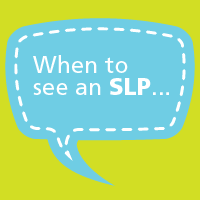 by Jill Yochim, MA, CALT, Learning Specialist
by Jill Yochim, MA, CALT, Learning Specialist
Sara swept her vibrant red hair out of her face as she smiled up at me, clearly pleased with herself and seeking praise for the fact that she had completed her reading beautifully. What a change from the tentative reader I had met one year earlier.
In fact, “reader” would not have been the right word for Sara then, as she was still sounding out every letter, sometimes forgetting to blend them back together to create a meaningful word. Sara’s school was considering holding her back to repeat first grade. But by the beginning of third grade, one year later, she had caught up with her peers and was scoring at grade level.
What caused the dramatic change? After being evaluated for a potential learning difference, Sara was diagnosed with dyslexia. Despite her parents’ and teachers’ best efforts to teach reading the traditional way, Sara wasn’t progressing like her peers. She needed training and practice to learn the right methods for countering her challenges.
For the 60% of people who learned to read effortlessly, it may be difficult to understand what someone with dyslexia experiences. Myths abound: That dyslexia can be “cured,” that people with dyslexia are not very bright, that it does not exist-it’s simply laziness. While dyslexia cannot be cured, it can be overcome.
Why reading is more challenging for dyslexic individuals
For those with dyslexia, language washes over them like a symphony. They enjoy it, they take meaning from it, but they cannot pull language apart and analyze its tiny pieces any more than the untrained ear can ascertain the precise moment the flute rests and the clarinets chime in behind the orchestra’s melody. With proper instruction, however, a person could learn to listen, and with practice could excel–and so can anyone with dyslexia. A person with dyslexia must work to develop awareness of the smallest units of sound or phonemes. Phonological awareness is the largest underlying reason for reading problems; while this awareness doesn’t occur naturally for kids with dyslexia, it is extremely teachable.
Another major component of reading is recognizing rules or patterns, a complicated task for the student with dyslexia. Most early readers notice the patterns of reading and spelling with little instruction. For example, they can read “light” and “kite” without being told that the same sound can be made with different letter combinations. Those with dyslexia, however, do not naturally recognize the patterns of language. They must learn the obscure rules that other readers can intuitively recognize. With explicit instruction and targeted practice, children with dyslexia can learn to perceive the same patterns.
What should you watch for?
If you are concerned about your child’s reading, the items mentioned above are red flags. Other red flags include:
Mistakes made in reading such as:
- Leaving off the suffixes of words, e.g., reading “plant” for “planted”
- Skipping the “little” words, e.g., “the” or “to”
- Difficulty correctly sequencing the sounds in words, e.g., reading “left” for “felt”
- Difficulty rhyming
- Inability to identify the individual sounds in words
It is important to note that a student might be showing some of these signs and still be keeping up with her class, making As and Bs. Often a student with undiagnosed dyslexia may mask a deficit in phonics skills by memorizing words, which is a great skill—as long as they are able to sound out and read words that she is not familiar with as well. Children are extremely resilient, unconsciously finding ways to compensate for what hinders them, but they can only compensate for a limited time before increasing academic demands require more reading skills than they possess.
If you see some of the above signs, talk to a specialist who assesses for learning differences and can provide specialized tutoring. Many children struggle unnecessarily, going undiagnosed or not receiving appropriate instruction for their learning differences. Untreated dyslexia can cause a child to not only fall behind his peers academically, but also to feel inadequate or “stupid” because of his learning difference. If your child is struggling with reading, act soon, rather than waiting. Children do not “outgrow” reading problems. Time only compounds a child’s skill deficits, and it’s possible that your child has the potential to quickly overcome his challenges once he receives the right instruction.
Tips to support your child’s reading at home
Whether or not your child is struggling with reading, you can support your child’s reading at home. The tips below are helpful for all students, with or without dyslexia.
- First and foremost, cultivate the motivation to read by immersing your children in a print-rich environment. Read to them for the sheer pleasure of it. This will also expose them to the ideas and vocabulary that their peers may be reading independently.
- Do not push your child to read at a level that is a struggle for her. Practice is extremely important, but only in skills that have already been taught.
- Create word games. “What word do we get when we take the /b/ sound out of beat?” “Add /s/ at the beginning of the word ‘pot.” Look out the car windows while driving and find everything that starts with the sound /k/. Your child does not need to know how to spell to do these activities; they are all auditory and the focus is on the sounds, not the letters. Thus, both ‘car’ and ‘kid’ start with the /k/ sound, helping emphasize phonemic awareness.
Sara’s mother was distraught when we met, afraid her daughter would fail in school and without any idea that dyslexia is treatable with strategies that can be taught. Sara’s story is not unique. With specialized instruction, dyslexia can be overcome to allow a child to reach her full potential.
CHC is here for you. If you have concerns about your child’s reading, contact us today to speak with a Care Coordinator.








